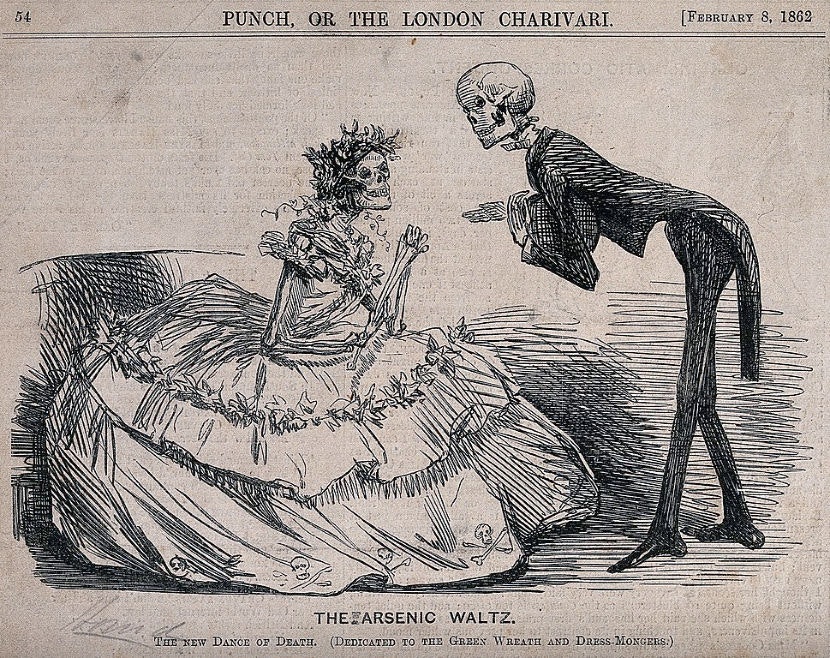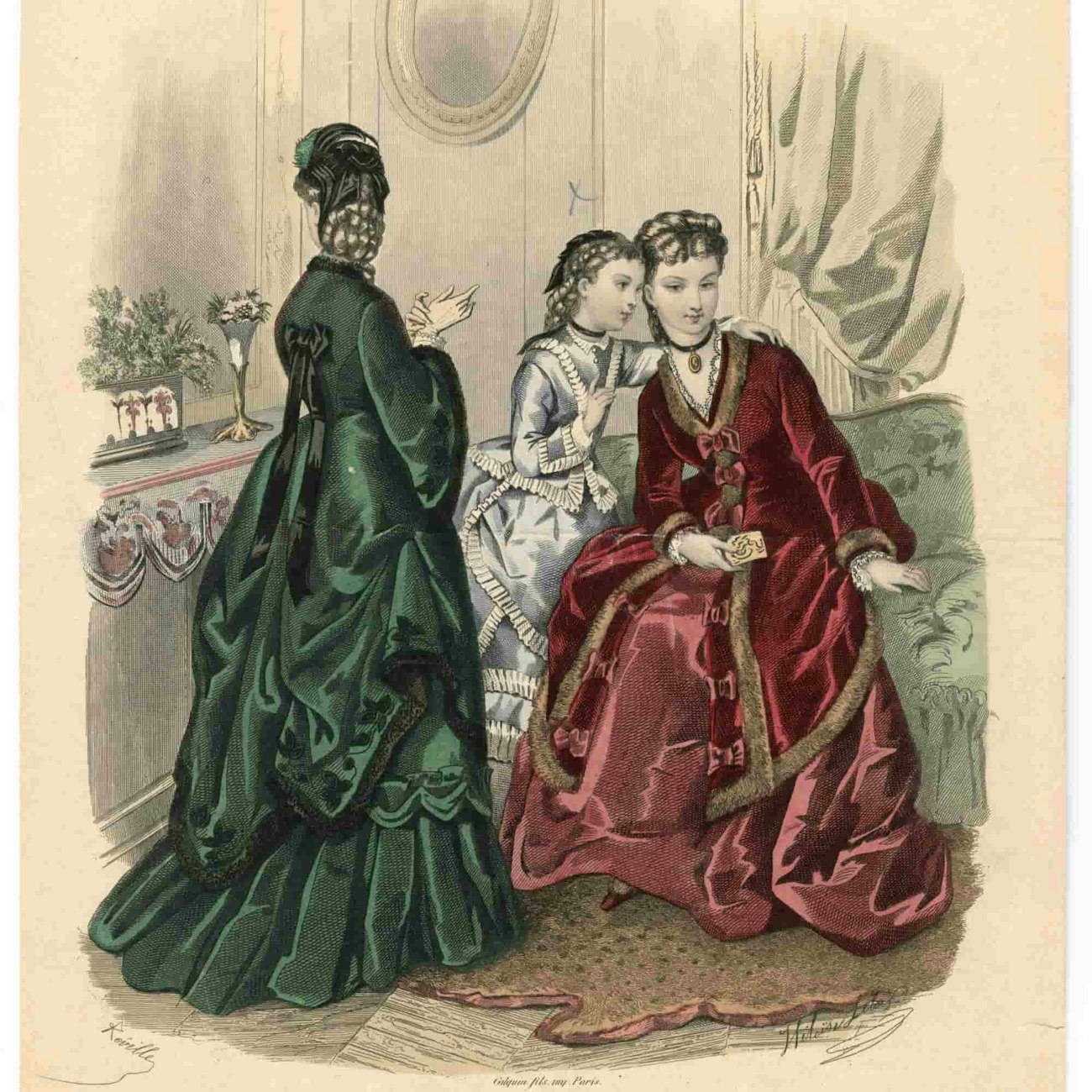Originally, I thought it might be fun to write about Donegal tweed in honor of St. Patrick’s Day, but then I stumbled upon a Jennifer Wright article titled “The History of Green Dye Is a History of Death.” With a headline like that, I had no choice but to start reading—and I found myself learning about the color green. Specifically, about the emerald-green dye manufactured by the Wilhelm Dye and White Lead Company.
The vibrant dye was an instant hit after its introduction in 1814. It produced colors that were much brighter and bolder than the other greens on the market at that time—and people couldn’t get enough of that emerald green. It was used not just in clothing, but also in carpets and wallpaper. In fact, it was everywhere. The only problem? The Wilhelm Dye and White Lead Company used arsenic in the dye to get the green just right.

A satirical cartoon from 1862 appeared a week after chemist A.W. Hoffman published “The Dance of Death,” an article exposing the dangers of arsenic-based dyes. Photo courtesy of Wellcome Library
We know now that arsenic is a deadly poison. As you might imagine, dressing oneself in clothing and covering one’s home in furnishings produced using a poisonous dye is a terrible idea, no matter how pretty said poison dye might be. I will not go into some of the more macabre details, but you should know that this dye caused terrible health problems. There’s a story of one lady who found her hands covered in blisters after wearing a pair of green gloves. Factory workers who needed to use the substance suffered terribly. A foreign dignitary told Queen Victoria that her green wallpaper made him ill. The queen, who eventually had that wallpaper removed, complained that the dye had a “mouse-like odor,” making this dye not only deadly, but stinky, too.
Perhaps most surprising is that even after people learned that the dye was potentially deadly, they kept using it. Other companies even started manufacturing the dye, which was also known as “Paris Green.” For some, the joy of wearing emerald green outweighed the chance of death. (It was, after all, a very pretty green.) Some people believed doctors were lying when they said the green was deadly, while others thought that as long as they didn’t get the dye in their mouth, they would be fine. They were, of course, wrong. It took decades for people to begin demanding alternatives to the arsenic-based dye, and for governments to enact regulations on such things.

This fashion plate from 1872 features a beautiful, vibrant, and probably deadly emerald-green dress. Photo courtesy of the Metropolitan Museum of Art
These days, fortunately, we can wear (and weave with) any shade of green we like without worry. In fact, many of us will be wearing green this St. Patrick’s Day for good luck. Of course, there are some who still view green with a suspicious eye. To this day, some professional seamstresses see green as an unlucky color, quite possibly because of this deadly dye debacle.
To learn more about the deadly green dye (and other terrible things people did to themselves in the name of fashion, including crinolines that catch fire), check out Alison Matthews David’s book Fashion Victims: The Dangers of Dress Past and Present (and if you wish I’d stuck to writing about Donegal Tweed, there is a lovely article about Eddie Doherty—one of the last handweavers of Donegal Tweed—in the November/December 2011 issue of Handwoven).
Happy Weaving!
Christina

